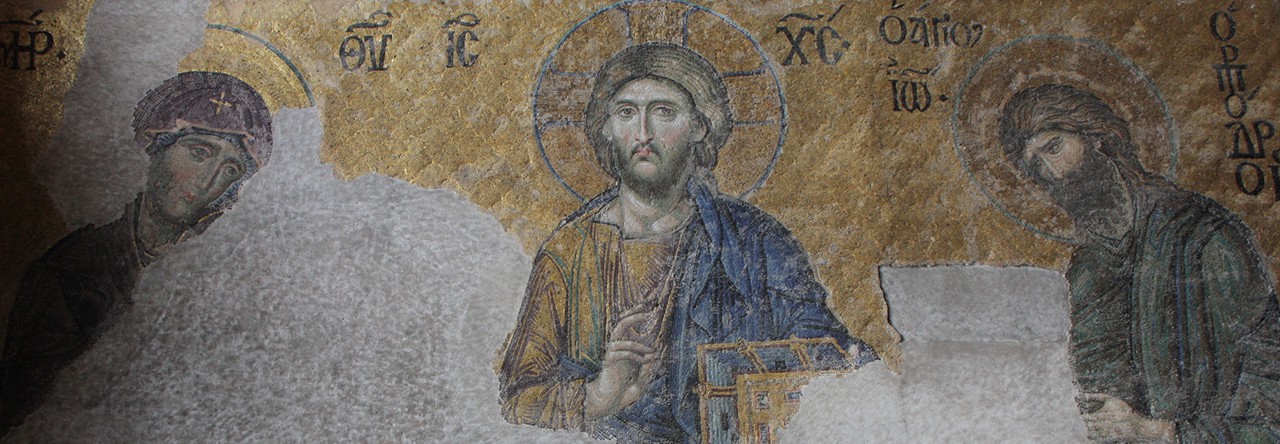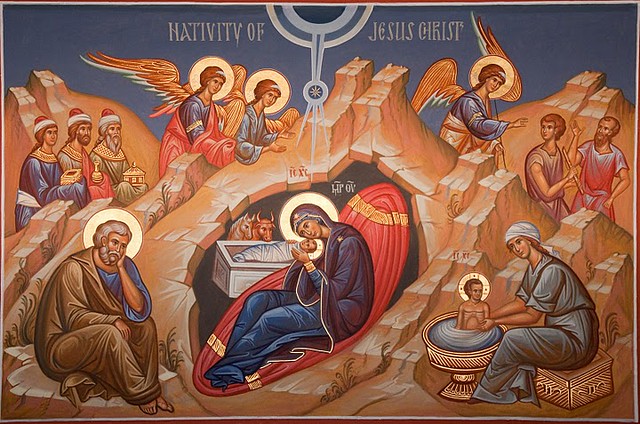“Giving birth is arduous, as we see in Mary’s reclining figure, resting after labor – and so is the labor to believe. Mary has completed this stage of her struggle, but Joseph still grapples with his. The them is not only Joseph’s bewildered face. The rigorous black of the cave of Christ’s birth in the center of the icon represents all human disbelief, all fear, all hopelessness. In the midst of a starless night in the cave of our despair, Christ, ‘the Sun of Truth,’ enters history having been clothed in flesh in Mary’s body. It is just as the Evangelist John said in the beginning of his Gospel: ‘The light shines in the darkness and the darkness cannot overcome it.’ The Nativity icon is in sharp contrast to the sentimental imagery we are used to in western Christmas art. In the icon there is no charming Bethlehem bathed in the light of the nativity star but only a rugged mountain with a few plants. The austere mountain suggests a hard, unwelcoming world in which survival is a real battle – the world since our expulsion from Paradise.[…]We see that the Christ child’s body is wrapped ‘in swaddling clothes.’ In icons of Christ’s burial, you will see he is wearing similar bands of cloth. We also see them around Lazarus, in the icon of his raising by Christ. In the Nativity icon, the manger looks much like a coffin. In this way, the icon links birth and death. The poet Rilke says we bear our death within us from the moment of birth. The icon of the Nativity says the same. Our life is one piece and its length of much less importance than its purity and truthfulness.” (Jim Forest, Praying With Icons, pp 90-91)


Pingback: Sunday Links Roundup - Fr. Peter Michael Preble | Fr. Peter Michael Preble
Pingback: Orthodox Advent: Feast of the Nativity – Politics and the Bible